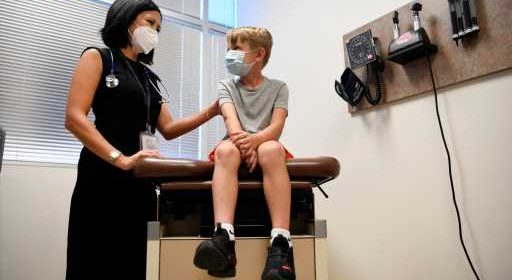Asthma attacks may rise again as viruses spread more in Colorado

Colorado’s “September epidemic” of asthma attacks is expected to return after two relatively quiet years as almost all kids are back in school now and, in most cases, without masks.
For some people with asthma, viruses that infect the upper respiratory tract may be a trigger, in the same way that pollen, pollution or strenuous exercise can be, said Dr. Carah Santos, an allergist and immunologist at National Jewish Health in Denver.
Typically, there’s an increase in people needing care for severe asthma attacks in the fall as kids go back to school, but that didn’t happen in 2020 and 2021, she said.
“We certainly saw that it was much more quiet,” she said.
More people sought help for asthma exacerbations this spring and summer than would be typical for that time of year, though not as many as in an average fall, Santos said. She expects the usual fall pattern to restart again this year.
“We are really bracing ourselves for having close to pre-pandemic numbers,” she said.
Adults also tend to have more asthma attacks during the respiratory virus season, since they also spend more time indoors and may be exposed to germs their kids pick up at school, Santos said.
Amelia Pierce, of Franktown, said her two children typically do well over the summer with just a rescue inhaler for emergencies, but during the school year, they use daily medication to keep down inflammation in their lungs. This year, her 7-year-old son Fynn’s doctor said he could try going without the daily medication so long as he feels well, but to start using it again at the first sign of illness.
Pierce said she and her husband emphasize handwashing and covering coughs, but there’s just no way of preventing the kids from picking up seasonal germs at school. That makes it doubly important to have a plan to head off asthma attacks, she said.
“When (my kids) do get sick, hopefully it will keep them out of the hospital,” she said. “Even just the common cold could set off their asthma.”
Flu, respiratory syncytial virus and various bugs that cause colds typically hit a low point over the summer and start spreading more widely in the fall, as weather changes and kids go back to school. (For school-aged children, RSV typically causes sniffles, though babies and older adults with health problems sometimes get seriously sick.)
That pattern was thrown off during the last two autumns, though it’s not clear if COVID-19 precautions were the sole cause. Some viruses that usually circulate most in the fall infected higher-than-expected numbers of kids in spring 2022 as life returned to normal for many people.
Bob McDonald, executive director of the Denver Department of Public Health and Environment, said it’s possible Colorado could have more flu activity this year after two mild seasons. It’s going to be important for people to get their flu shots and stay up to date on any boosters they qualify for, he said.
The state health department is no longer requiring masks in classrooms or encouraging classrooms to quarantine after a student or teacher tests positive for COVID-19. State epidemiologist Dr. Rachel Herlihy said the state is pursuing a “transmission mitigation strategy,” based on improving indoor ventilation, moving activities outdoors when possible and reminding sick people to stay home. Schools could opt to do more, like requiring quarantining or masks in certain situations, but most aren’t planning to do so at this point.
Parents have the option to get their children vaccinated against COVID-19 and to encourage them to wear masks if they want to avoid the virus, McDonald said. People who are at higher risk of severe disease will need to take other precautions, he said.
“The tools are there for everyone to protect themselves,” he said. “Parents can make educated decisions.”
About 38% of children between ages 5 and 11 are fully vaccinated against COVID-19, as are about 65% of those between 12 and 17. The state doesn’t specifically track how many children receive the flu vaccine, but produces estimates. In 2018, the most recent year with data, an estimated 61% of kids between 5 and 11 got the flu shot, but only about 52% of teenagers did.
The best things people with asthma or other chronic lung diseases can do are to get their symptoms under control before being exposed to a virus and to have a plan to use their rescue inhalers if they do have an exacerbation, Santos said. It’s also important to get the flu and COVID-19 vaccines, and to take precautions like washing hands frequently and wearing masks, she said.
“A lot of it is preparedness,” she said.
Subscribe to bi-weekly newsletter to get health news sent straight to your inbox.
Source: Read Full Article